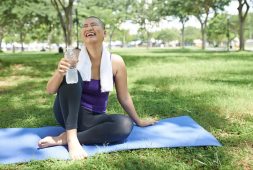
Recent studies have unveiled a noteworthy “gender gap” pertaining to exercise habits, demonstrating a surprising trend favoring women. Analysis conducted on a vast dataset comprising 412,000 American adults has revealed that women tend to derive greater cardiovascular benefits from exercise compared to men. This discovery challenges conventional assumptions, indicating that females can achieve equivalent health advantages through exercise with comparatively less exertion.
According to Professor Martha Gulati, an esteemed figure in Preventive Cardiology at Cedars-Sinai Medical Center in Los Angeles, women can attain similar benefits to men through physical activity, albeit with reduced effort. She elucidates that this phenomenon arises from historical disparities in exercise frequency between genders, with women typically falling behind men in engaging in meaningful physical activity.
In essence, these findings underscore the importance of tailored exercise interventions that consider gender-specific differences in maximizing cardiovascular health benefits. By acknowledging and addressing this gender gap in exercise behavior, healthcare professionals can develop more effective strategies to promote physical activity and mitigate cardiovascular risk factors among both men and women.
“The beauty of this study is learning that women can get more out of each minute of moderate to vigorous activity than men do.”
The research team conducted an in-depth analysis of 22 years’ worth of data collected through the National Health Interview Survey. Their comprehensive study, now published in the prestigious Journal of the American College of Cardiology (JACC), sheds light on an intriguing discovery.
Their findings challenge conventional wisdom, suggesting that women may achieve greater cardiovascular benefits from exercise despite exercising less frequently compared to men. This revelation underscores the importance of considering gender-specific factors in understanding the relationship between physical activity and heart health.
“For all adults engaging in any regular physical activity, compared to being inactive, mortality risk was lower,” said Professor Susan Cheng. She is the study senior author.
“Intriguingly, though, mortality risk was reduced by 24 percent in women and 15 percent in men.”
The research team delved into the impact of moderate to vigorous physical activity, encompassing activities like brisk walking or cycling. Their findings revealed intriguing disparities between genders regarding optimal exercise duration for maximal survival benefits.
For men, engaging in this level of exercise for approximately five hours per week was associated with peak survival benefits. In contrast, women attained comparable benefits with only two-and-a-half hours of weekly activity.
Furthermore, the study explored the effects of weightlifting and other muscle-strengthening exercises. Men reached their peak benefits from three weekly sessions, while women achieved similar outcomes with just one session.
Interestingly, the research also highlighted distinct thresholds for maximal survival benefits based on gender and exercise type. Women derived optimal benefits from 140 minutes of exercise per week, whereas men required twice that amount, totaling 300 minutes weekly, to attain equivalent benefits. Moreover, the study indicated that women could continue to accrue additional benefits with up to 300 minutes of exercise per week.
Professor Christine Albert, the lead researcher, expressed hope that women would embrace these findings, recognizing the personalized approach to exercise that can optimize their health outcomes.
“I am hopeful that this pioneering research will motivate women who are not currently engaged in regular physical activity to understand that they are in a position to gain tremendous benefit for each increment of regular exercise they are able to invest in their longer-term health.”



